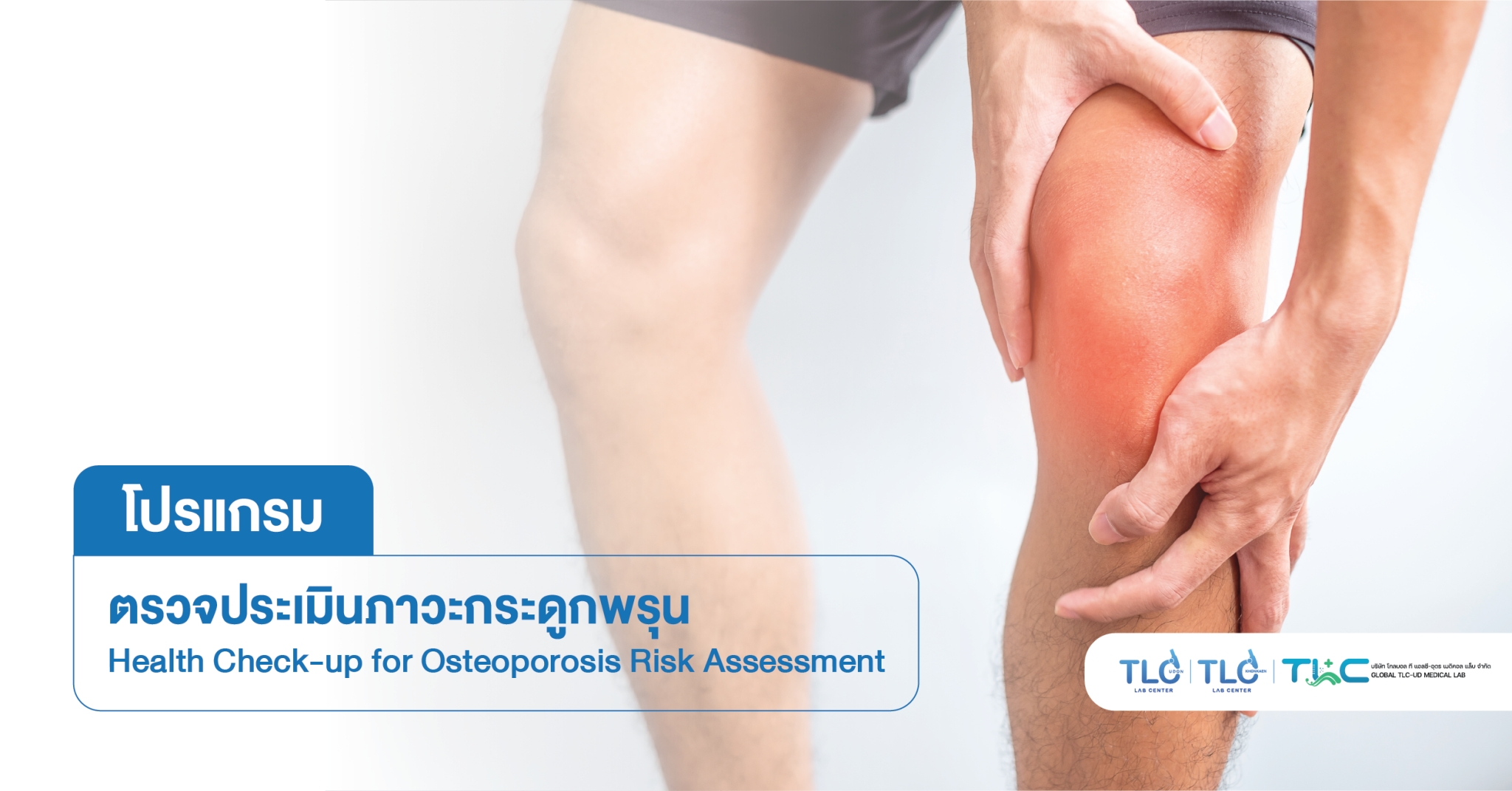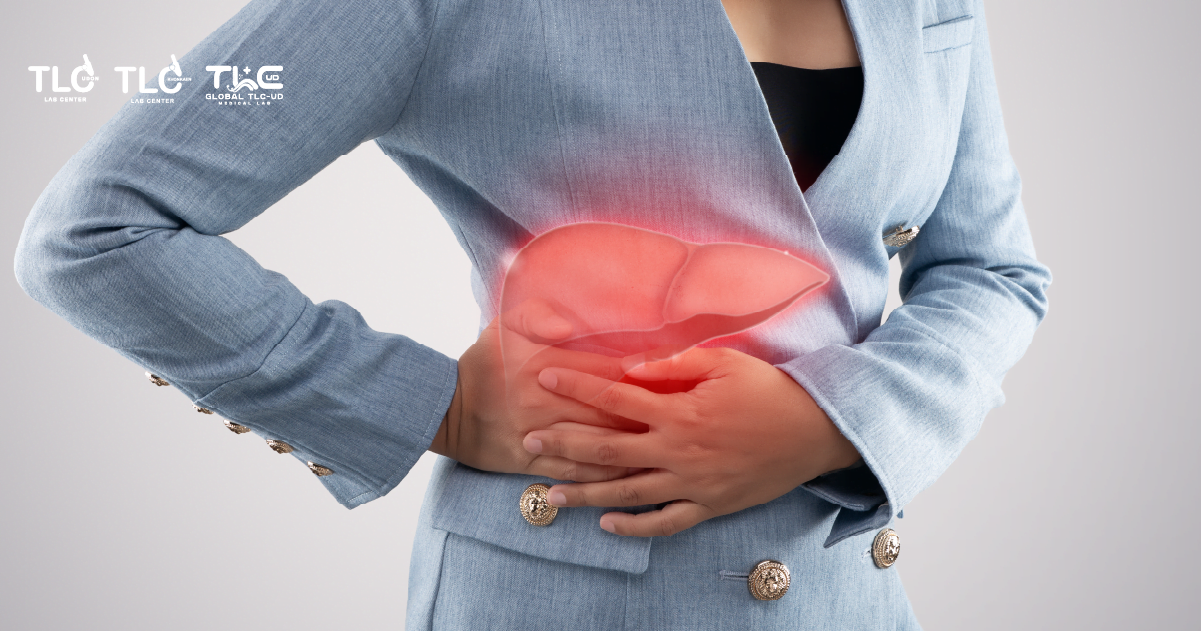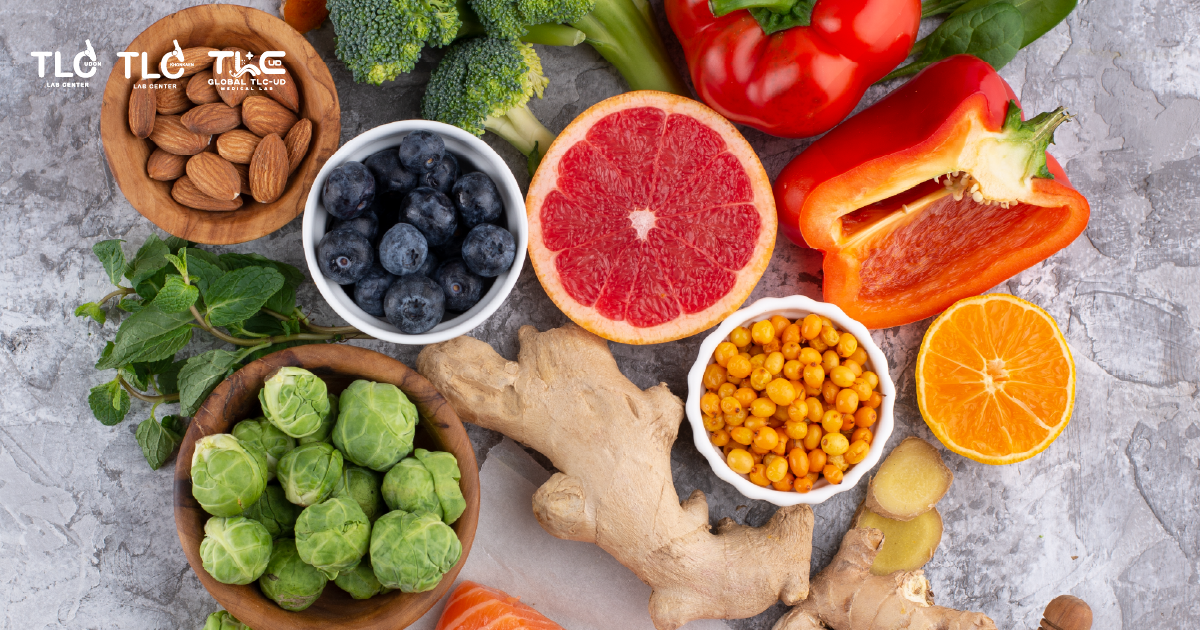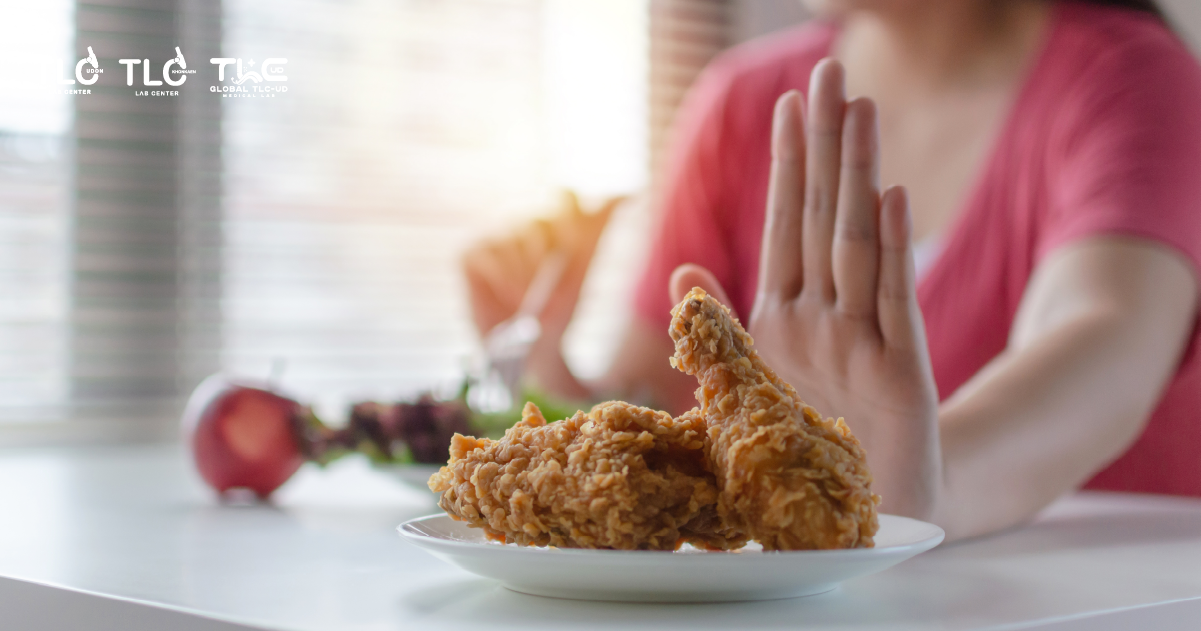Phosphorus is a vital mineral essential for maintaining normal bodily functions. It plays a critical role in neuromuscular regulation, particularly in supporting proper cardiac muscle function. The majority of phosphorus in the body—approximately 89%—is stored in the bones and teeth, while around 10% is found in muscle tissue, and the remaining 5% is distributed among various organs and circulating in the blood.
What is Phosphorus?
Phosphorus is a vital mineral essential for maintaining normal bodily functions. It plays a critical role in neuromuscular regulation, particularly in supporting proper cardiac muscle function. The majority of phosphorus in the body—approximately 89%—is stored in the bones and teeth, while around 10% is found in muscle tissue, and the remaining 5% is distributed among various organs and circulating in the blood.
How Does Phosphorus Benefit the Body?
- Prevents osteoporosis : Almost all (about 85%) of the body’s phosphorus is found in bones and teeth. The rest is in blood and soft tissue cells. The body combines phosphorus and calcium to form calcium phosphate salts, which strengthen bones and help prevent osteoporosis.
- Protects the heart : Phosphorus helps the kidneys flush out excess calcium. Without enough phosphorus, calcium may build up in blood vessels, leading to hardened arteries (atherosclerosis) and heart disease, both increase the risk of heart attack and stroke.
- Supports the nervous system : Phosphorus helps nerves function smoothly by promoting the release of neurotransmitters, the chemicals that carry signals between nerves, muscles, and other cells. These signals also trigger muscle movement.
- Promotes urinary health : Phosphate increases urine acidity, which can help prevent kidney stones.
How Much Phosphorus Do You Need Each Day?
Our bodies can’t make phosphorus, so we must get it from food or supplements. The recommended daily amount (RDA) depends on your age, and if you’re pregnant, breastfeeding, or have certain health conditions.
Recommended Daily Intake (RDA)
| Age Group / Condition | Phosphorus (mg/day) |
|---|---|
| Infants 0–6 months | 100 mg |
| Infants 7–12 months | 275 mg |
| Children 1–3 years | 460 mg |
| Children 4–8 years | 500 mg |
| Children/Teens 9–19 years | 1,250 mg |
| Adults 19+ years | 700 mg |
| Pregnant/Breastfeeding Teens | 1,250 mg |
| Pregnant/Breastfeeding Adults | 700 mg |
Types of Phosphorus in Foods
- Naturally occurring phosphorus: The body absorbs about 40–60% of this type. People with high phosphorus levels should control foods from this group.
- Milk and dairy (yogurt, ice cream, cheese, butter)
- Beans, seeds, grains, and grain products (brown rice, oats, whole wheat, sesame, soy desserts, tofu, millet, mung beans, pumpkin seeds, cashews)
- Egg yolks and foods containing them (traditional Thai sweets, custards, mayonnaise, egg noodles, fish roe)
- Edible-bone seafood (dried shrimp, tiny shrimp, small fish, fish fins, fried insects)
- Meats and organ meats
- Added phosphorus: Found in food additives and preservatives, and absorbed at over 90% or nearly completely. If you have high blood phosphorus, avoid these foods:
- Processed meats and fast foods (sausages, meatballs, Chinese sausages, nuggets, fries, hamburgers, dim sum)
- Ready-to-eat, frozen, and canned foods
- Foods with baking powder or yeast (steamed buns, fried dough sticks, bakery bread, and pastries)
- Canned or bottled drinks (instant tea/coffee, soda, beer, juice boxes)
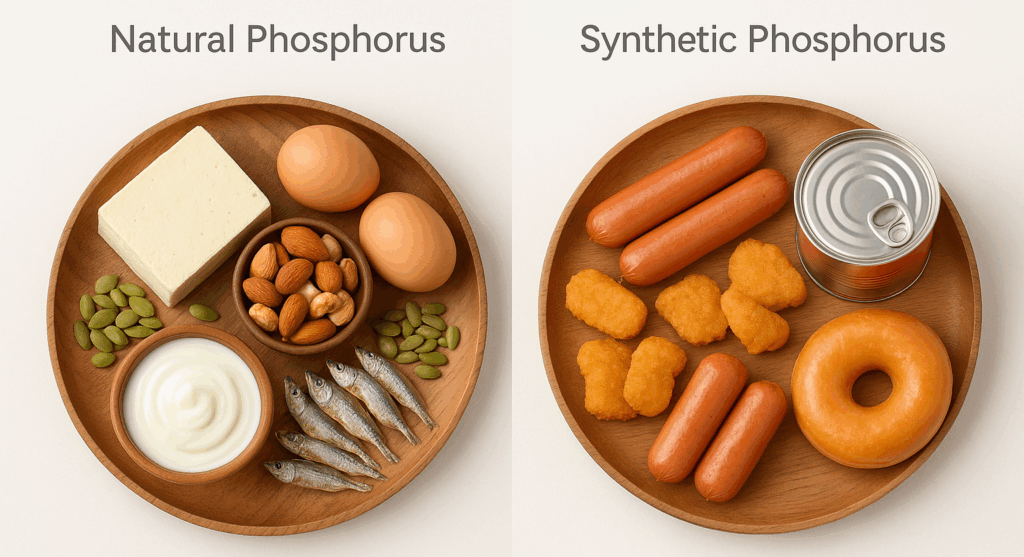
Symptoms of High Blood Phosphorus
- Itching from phosphorus deposits under the skin
- Thinning bones, as calcium is pulled from bone and forms lumps in tissue
- Hardened arteries and enlarged parathyroid glands
Symptoms of Phosphorus Deficiency
- Anemia
- Bone pain or fractures
- Muscle weakness
Foods with Phosphorus
- Egg whites (good protein, low phosphorus)
- Fish (avoid bones, fins, cheeks, dried fish)
- Lean beef, pork, chicken, duck (without skin/fat)
- White rice, refined starches (rice noodles, glass noodles, Shanghai noodles)
- Thai desserts are made mainly from protein-free flour (agar, salim, lod chong, tapioca pearls, layered dessert, sticky rice flour dessert) (If you have diabetes, consume sparingly.)
- Black coffee or plain tea (still some phosphorus, so don’t drink too much)
- Lime juice, herbal drinks (pandan, butterfly pea, ginger tea—avoid if you have high blood potassium)
Health Management Guidelines
- If blood phosphorus is over 5 mg/dL:
- Avoid high-phosphorus foods to keep levels in the normal range (2.4–5.1 mg/dL).
- If blood phosphorus is too low:
- You may increase high-phosphorus foods, but only under medical/nutritionist guidance.



